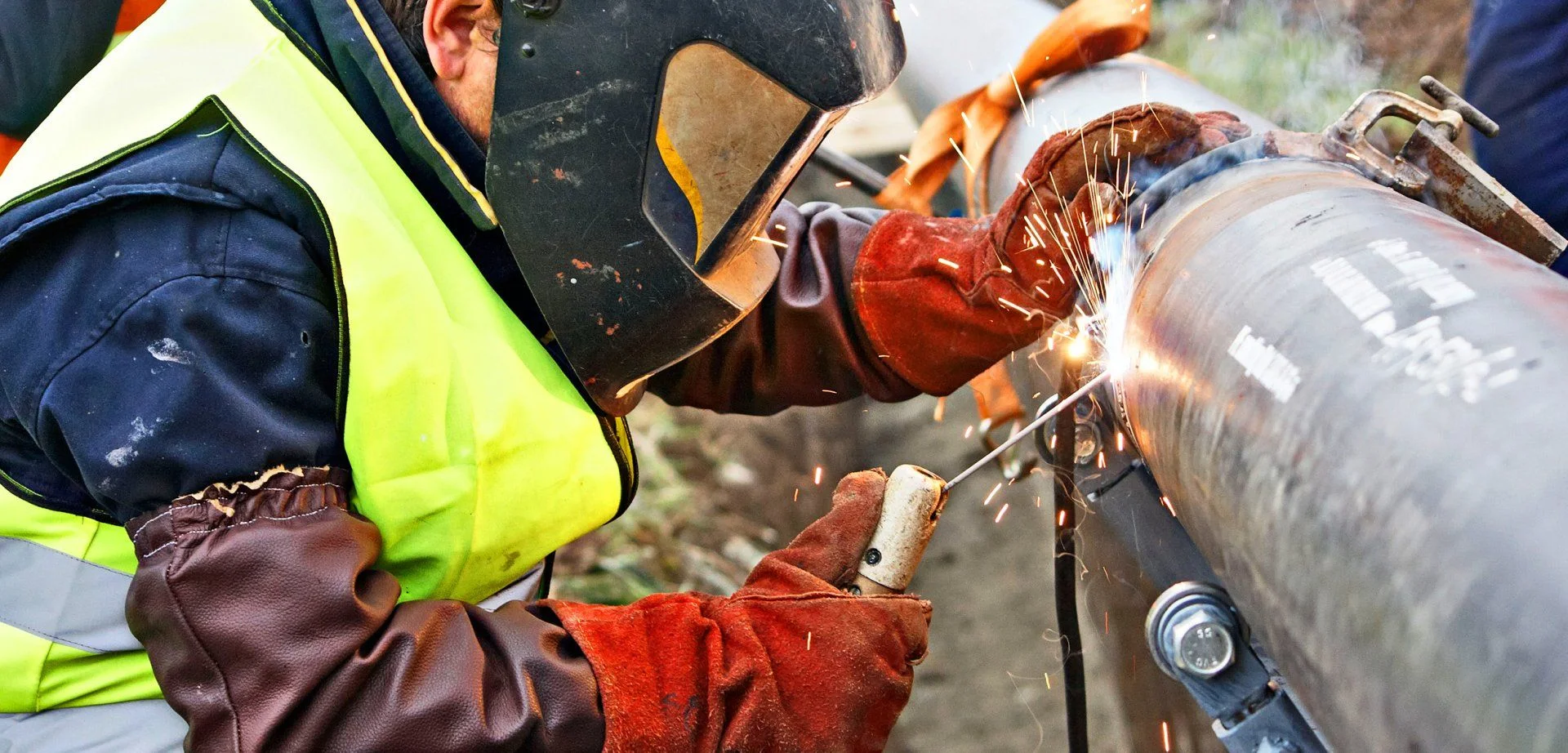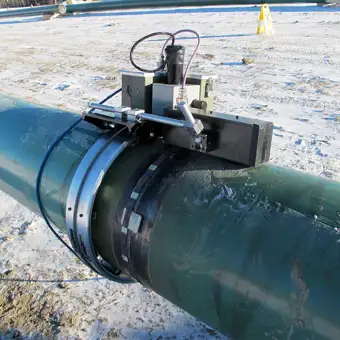Comprehensive Guide to Pipe Welding Examination: Ensuring Honesty and Safety in Pipe Building and Maintenance
The stability and security of pipes are paramount in today's infrastructure landscape, highlighting the important role of welding assessment in pipe construction and upkeep. Pipeline Welding Inspection. The intricacies included in welding inspection raise significant questions about industry standards and the progressing innovations that might redefine these methods.

Relevance of Welding Examination
Welding examination plays a critical duty in making certain the honesty and safety and security of pipe systems. It functions as a fundamental process that validates the high quality and integrity of bonded joints, which are usually one of the most vulnerable factors in pipe construction. With methodical assessment, assessors can determine prospective issues such as splits, porosity, and insufficient combination, which may endanger the architectural stability of the pipeline.
The relevance of welding evaluation expands beyond plain compliance with market criteria; it also safeguards public health and wellness and the setting. Extensive examinations can enhance the longevity of pipeline systems, minimizing the need for expensive fixings and downtime.
In addition to making sure safety and security and compliance, welding assessment fosters a society of quality control within organizations. By focusing on inspection throughout the welding procedure, firms can develop a reputation for integrity and excellence, inevitably causing increased client self-confidence and company possibilities (Pipeline Welding Inspection). Hence, the relevance of welding evaluation can not be overemphasized in the context of pipe building and maintenance
Trick Welding Procedures
Various welding processes are employed in pipe construction, each with its own benefits and applications. Amongst one of the most commonly made use of methods are Shielded Metal Arc Welding (SMAW), Gas Tungsten Arc Welding (GTAW), and Gas Metal Arc Welding (GMAW) SMAW is favored for its versatility and ability to do well in numerous ecological conditions, making it appropriate for field applications.
GTAW, commonly referred to as Tungsten Inert Gas (TIG) welding, is acknowledged for its capability to generate high-grade welds with superb control over heat input, making it suitable for thin-walled pipelines and stainless-steel products. GMAW, or Steel Inert Gas (MIG) welding, offers high deposition rates and is efficient for large-scale tasks, usually utilized in the construction of pipelines in controlled settings.
Additionally, Immersed Arc Welding (SAW) is used for its deep infiltration and high efficiency, particularly in the construction of large-diameter pipelines. Each of these procedures adds to the general integrity and safety and security of pipe building and constructions, allowing welders to pick one of the most proper technique based on material kind, job demands, and environmental problems. Recognizing these crucial welding processes is necessary for efficient pipeline welding inspection.
Usual Flaws and Their Effect

Porosity, identified by small gas pockets entraped within the weld, damages the product and can bring about leaks. Fractures, which might happen as a result of thermal stresses or improper cooling, can propagate and result in structural failing under pressure. Undercutting, where the base steel is deteriorated along the weld grain, decreases the effective cross-section of the pipe, boosting the risk of fracture.
Insufficient blend happens when the weld steel does not effectively bond with the base steel, causing weak areas that might stop working under anxiety. Slag addition, the entrapment of non-metallic product within the weld, can likewise compromise the joint's honesty. Recognizing and attending to these defects early in the building and construction process is critical to making sure the long-lasting reliability and safety and security of pipeline systems, consequently safeguarding both the setting and the facilities.
Evaluation Techniques and Devices

Aesthetic assessment is the initial line of protection, permitting assessors to recognize surface area abnormalities, imbalance, or various other visible flaws. Ultrasonic testing utilizes high-frequency sound waves to discover interior defects, offering accurate depth dimensions and identifying issues without damaging the weld. Radiographic screening makes use of X-rays or gamma rays to create pictures of the weld, enabling the recognition of interior spaces, splits, or additions.
Magnetic particle testing is specifically reliable for finding he has a good point surface and near-surface gaps in ferromagnetic materials. This strategy entails applying an electromagnetic field and great iron fragments to the weld, revealing problems through the more helpful hints buildup of bits at imperfection sites.
Along with these methods, specialized devices such as automated ultrasonic screening devices and electronic radiography systems boost inspection precision and effectiveness, making sure a detailed evaluation of pipeline welds throughout construction and maintenance.
Best Practices for Conformity
Abiding by ideal practices for compliance in pipe welding inspection is essential for making sure the stability and security of the facilities. Organizations needs to establish a detailed quality monitoring system that straightens with sector criteria such as ASME, API, and AWS. This consists of creating thorough welding treatments that define the materials, techniques, and qualifications required for welders.
Routine training and certification of inspection workers are vital to maintain high proficiency degrees. Examiners ought to recognize with various non-destructive testing (NDT) techniques, consisting of ultrasonic testing, radiographic screening, and aesthetic evaluation, to effectively recognize prospective defects.
Documents plays an essential role in compliance; maintaining accurate documents of evaluations, weld treatments, and workers certifications assists to guarantee traceability and accountability. Set up audits and testimonials of welding techniques ought to be performed to determine locations for enhancement and ensure adherence to developed procedures.

Final Thought
To conclude, the execution of strenuous welding examination methods is vital for guaranteeing the integrity and safety of pipe construction and upkeep. By recognizing problems and employing advanced evaluation methods, organizations can dramatically improve the quality of bonded joints. Sticking to ideal methods fosters conformity with market standards, inevitably protecting public health and protecting against environmental risks. Continual enhancement in evaluation procedures will certainly contribute to the longevity and reliability of pipe systems, highlighting the crucial duty of welding assessment in the industry.
The integrity and safety of pipelines are vital in today's framework landscape, underscoring the critical duty of welding examination in pipe building and upkeep. Understanding these vital welding procedures is necessary for reliable pipeline welding assessment.
Adhering to finest practices for compliance in pipe welding evaluation is important for guaranteeing the integrity and safety of the facilities.In verdict, the application of strenuous welding examination procedures is paramount for guaranteeing the honesty and safety of pipeline building and construction and upkeep. Continuous enhancement in examination processes will certainly add to the long life and dependability of pipeline systems, emphasizing the crucial function of welding evaluation in the sector.